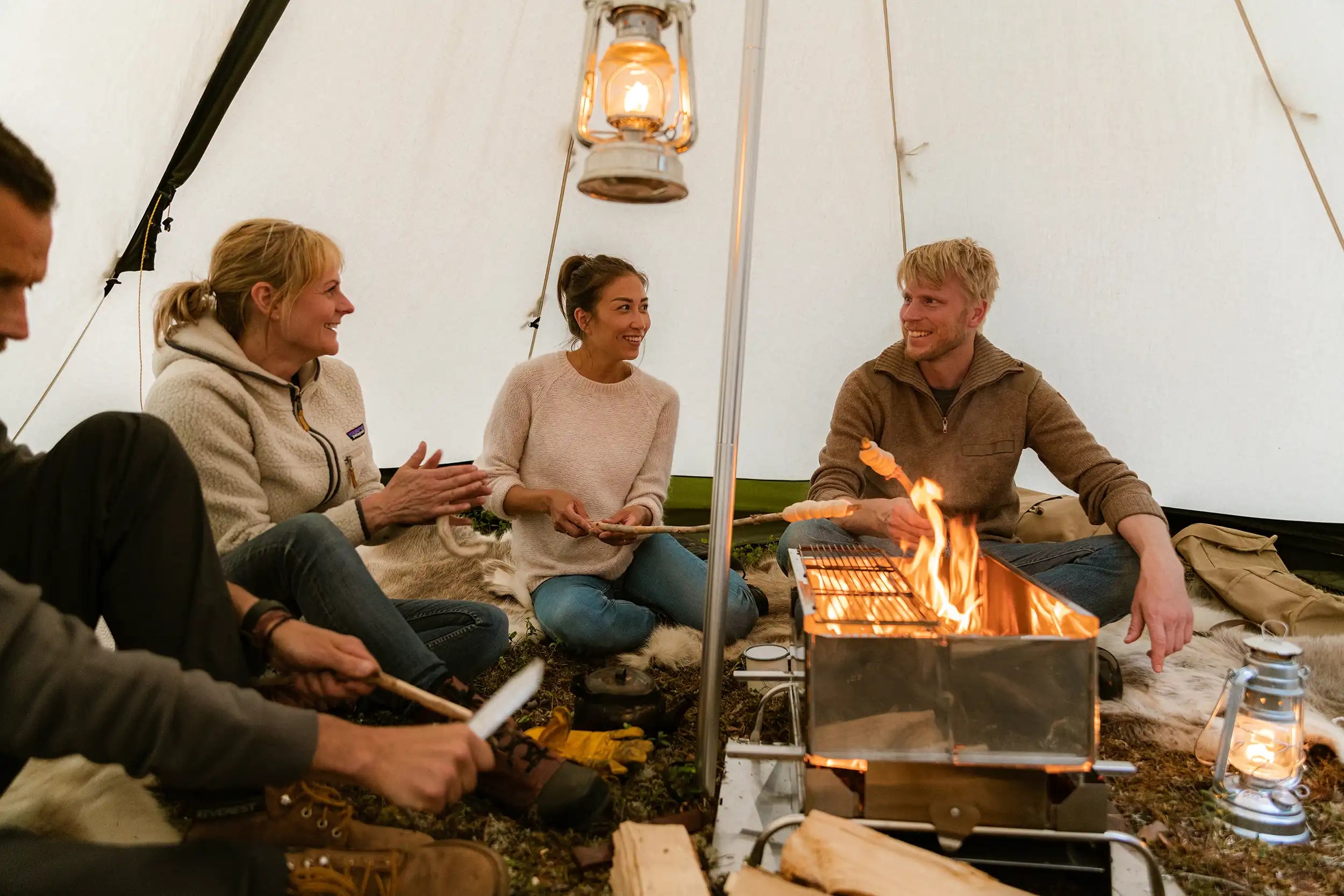
Making a fire and preventing carbon monoxide poisoning
Any Carbon based heat source such as barbecue coal grill, propane burner, a camp fire’s afterglow, etc. can be a source of poisonous Carbon Monoxide (CO) if not enough oxygen is available for combustion. Since CO easily mixes with air, it’s easy to get rid of the risk if some ventilation flow is arranged — ideally using ground level and tent apex vents, because the rising column of hot air creates air flow and mixing, with fresh air being drawn in at the bottom of the tent even when it’s not windy — this is how a Tentipi Nordic tipi works.

All Tentipi Nordic tipis are designed for the safe use of a fire or stove. The designs are based upon traditional Sami shelters, where the presence of a fire was an essential part of their way of life, and this safe use of fire incorporated the use of venting. In practice, it’s only the campfire’s afterglow or charcoals which may create a problem. These glowing fuels don’t emit smoke, and the temptation is to close off ventilation to conserve heat. Be aware that as long as it’s glowing, some ventilation needs to be provided to the fire. The message is a simple, but very important one — if you use a fire, you need good venting for its safe use.

We recommend that you completely extinguish your fire before closing off tent vents. This will prevent the build-up of carbon monoxide. For complete peace of mind, invest a small amount of money in a portable carbon monoxide alarm.

When using an Eldfell stove in your Nordic tipi, any CO problems are negligible. Burning fuel within the stove creates heat, and warm gases rise through the chimney exiting the roof. This creates lower pressure inside the stove, and prevents gases from exiting to the Nordic tipi. In the (highly unlikely) situation where someone makes the Nordic tipi airtight (!), fresh air still enters the tent high up in the roof, from the space around the insulated chimney.

Reports of tragic accidents involving CO poisoning in tents seem to have two factors in common. The first concerns the use of charcoal barbecues, and the second concerns the design of the tent — most of which are never designed around the use of fire or stoves. For this reason, extra care needs to be taken with charcoal and smokeless fuels. Smoke is a warning of incomplete combustion, and your barbecue won’t provide this warning.

Adventure
Tents for both family camping and extreme expeditions, a space for good times in all weathers. The shape makes them very resistant to weather and wind, providing standing height and possibility of fire inside for heating and cooking. Pitched in three minutes and easy to pack down and carry. Modern materials and plenty of smart features make them your home in your backpack. In breathable robust cotton polyester fabric or lightweight materials when weight matters.
Read more about Nordic tipis for outdoor living from Tentipi


